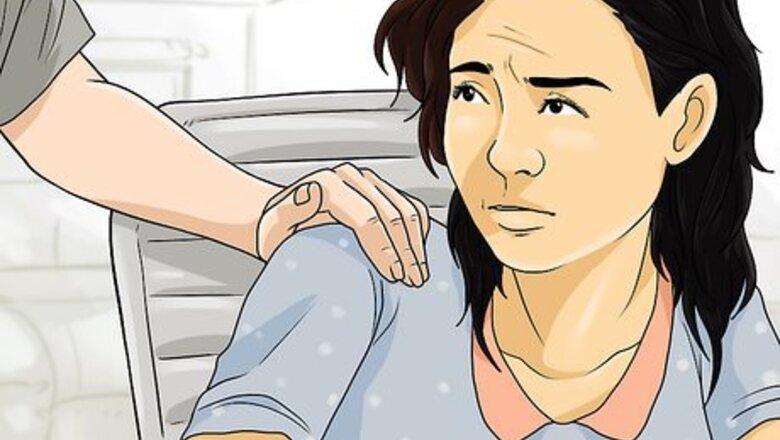
views
X
Research source
Other studies have shown that relationships that have higher rates of physical affection report more relationship satisfaction. [2]
X
Research source
Increasing Affection with Touch
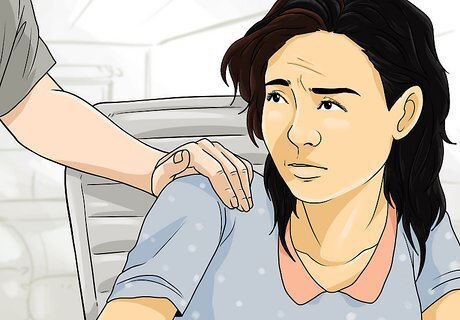
Recognize discomfort. Some people are uncomfortable with touch because of personality, family history, intimacy issues or trauma. This can make it difficult to initiate or enjoy displays of physical affection, such as caressing, hugging, holding hands or cuddling. Deal with your fears regarding intimacy and connecting physically with another person. Accept that you are afraid, and find out where it’s coming from. It can be helpful to realize that your fears are probably not related to your current partner or events, and to try to move past them. Talk to your partner and let them know that you are uncomfortable and why. Ask him or her to be patient. Showing physical affection can be easier as you get to know someone better and deal with the root causes of your discomfort with physical intimacy. Plus, improving communication may lead to a closer and more affectionate relationship. Talk to a professional about it. They can help you deal with the negative emotions related to your fears and get over your hesitation to show physical affection. If you don’t want to talk to someone, you can write about it in a journal or express your feelings in other ways. Make showing physical affection a habit. Hold your partner’s hand, touch their shoulder or give them a hug as often as possible. Eventually, showing affection physically will come easier and more natural.

Schedule cuddle time with kids or spouses. Touching helps relieve stress and pain, can help people cope and strengthen bonds. Put cuddle time on your daily schedule with your family to promote physical and psychological health. Date night, story time and even TV watching time can all be combined with cuddling.

Hold hands. Whether it is with your partner or your kids, holding hands is quick, painless and can really cement your bond. In fact, it is probably one of the easiest ways to immediately increase the amount of physical affection you show for another person. Whether you are walking to the bus stop, through grocery isles or sitting at home on the couch, reach over and take someone’s hand that you care about.
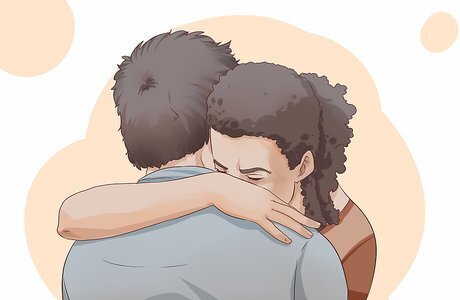
Include physical touch in your list of health goals. Having contact with your kids and partner can release oxytocin, the cuddle hormone, which lowers blood pressure. It can also help you control the stress hormone cortisol. Physical touch activates the orbitofrontal cortex in the brain, which contributes to rewarding feelings and can even boost the immune system.

List healthy ways that you can be physically affectionate. Physical affection is any touch that is meant to boost affectionate feelings or love in the giver or receiver. Write down your list so you can refer to it later. Then, make it a goal to do each method at various points throughout the week. Some ways that you can show affection include: kissing, back rubs, massages, caressing, cuddling, holding, hugging and holding hands. There may be other methods specific to you or your relationship that can also relay feelings of love. Although it may take 21 days to form a habit, the time length depends upon the person. Continue referencing this list for several months to permanently change how much physical affection you show.

Give playful nudges. Finding humor with your partner can be enhanced by good-natured physical contact. This may be a gentle squeeze, shoulder or knee nudge, playful slap, knuckle nudge or soft push. Always be sure that your partner doesn’t mind when you nudge them and never hit hard, cause pain or leave bruises.
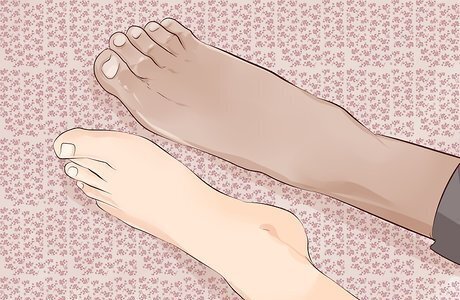
Put your feet together. You can wrap your legs and feet together, play footsie under the table, put your feet in your partner’s lap or vice versa. This connects you physically and keeps you aware of each other’s presence if you are sitting directly across from him or her. Remember, any physical contact that is intended to convey affectionate feelings is a form of physical affection.
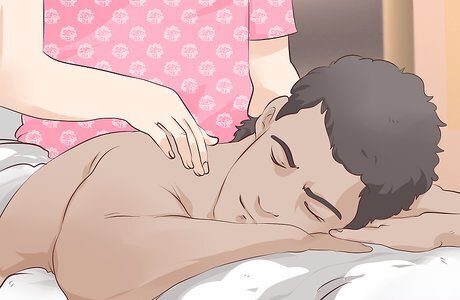
Try a massage. Along with other forms of physical affection, giving massages can help bring you closer in your relationship. Additionally, massages have health benefits including: reducing stress, increased blood and nutrient flow and helping with pain. For all these reasons, a back, foot or body massage is a great way to show physical affection. Your partner will probably enjoy it and hopefully return the favor.
Increasing Verbal Affection

Give verbal affirmations. Giving verbal affection, such as saying, “I love you” or “I care about you”, is an important way to strengthen bonds and is even good for you physically and mentally. Don’t let texting or emailing the ones you love replace verbal affection. If you are apart, then pick up the phone to check in because it’s more personal, even if it takes more time. Verbal expressions of affection are the words you speak intended to validate your positive feelings of love and affection and make your partner feel loved. This can be unique to you, your partner and your relationship as long as what you say produces the intended emotions and reinforces your affection for each other. If you must use electronic modes of communication, sign off with a phrase like “Thinking of you” or “Miss you” instead of a something generic.

Understand that long-distance relationships require more verbal affection. Since you won’t be able to physically touch and bolster your bond that way, you will need to tell him or her how you feel more often. This is important to maintain the closeness in your relationship and reinforce feelings of safety, comfort and trust. If possible, use Skype or Google Hangout so you can make eye contact and pick up on physical cues while talking.

Compliment someone you care about every day. Compliments are a form of showing verbal affection that can boost self-esteem, show you care and make the ones you care about feel good. Additionally, compliments motivate people to succeed because they believe they can. Always give truthful compliments though or you risk what you said being dismissed as shallow flattery. Look for things that you admire, appreciate or that the other person is good at to compliment. This can be anything from the way they look, a feature of their face that you particularly enjoy (such as eyes or lips), a personality trait, accomplishments, the positive way they make you feel or a skillset that you admire. Be honest, and don’t let opportunities to compliment those you love pass you by. Tell your wife, “You have beautiful eyes” while looking at her or “You complete me”, if it’s true. Tell your husband, “You look handsome in that shirt” when he gets ready for work or “You’re a great cook” when he makes you breakfast. Tell your child, “You’re so smart” when you see a report card or “You’re good at sports” after practice.

Greet your partner or children when they get home. Stop what you are doing and interact with your partner or children so they know you care. You want them to know they are more important than anything else and that you missed them. Combine verbal affection with physical affection by giving your kids a peck on the cheek or top of the head. You may want to kiss your partner on the lips or cheek.

Nickname your partner or children. A positive nickname shows that you have a special bond. The name you choose usually reflects some characteristic, habit or event related to the person. It can also be a shortened form of their legal name. Make sure that they are happy to be called by a nickname - some people prefer not to be addressed in this manner. Some common nicknames include: Angel, Cowboy, Doll, Babe, Dear, Honey, Love or Sweetheart or Sweetie.

Take the time to say “thank you”. Think of all the things the other person does for you or the ways they improve your life. Look them in the eyes and express your appreciation in a few sentences. You want them to know exactly how much you love and appreciate them and everything they do.

Don’t assume that “I love you” is the only way to express affection. If you are not saying it, you should try to make it a regular part of your vocabulary. Phrases like “You’re great”, and “I’m so lucky to have you”, are also good ways to show affection. There is probably also something specific to your relationship, such as a mutual interest in cars, that allows you to expand on these simple phrases to include descriptions of something you really love for added meaning. If you love cars, then you might use a favorite vehicle to explain how you feel by saying, “You’re my 1968 Plymouth Road Runner Hemi.”
Developing Habits to Increase Affection

Return affection automatically. Answer cues by returning hugs, complimenting, saying “I Love You,” kissing someone on the cheek or high fiving. Ignore the urge to hesitate during these moments. If you aren’t used to doing this, it may take some practice but will become second nature in time.
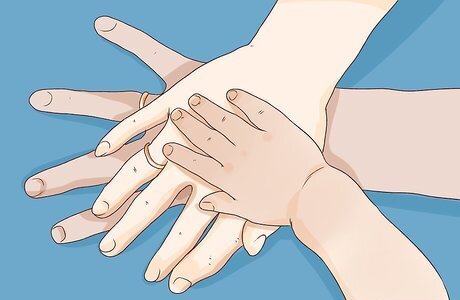
Don’t let only one parent be the “affectionate parent”. In decades past, it was not as culturally important for dads to be affectionate to kids. However, times have changed. Both parents should strive to show affection to their children, even if it is not natural for one of them.
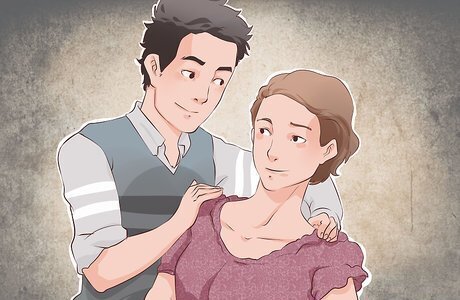
Make eye contact. While you are cuddling, holding hands or giving a compliment, eye contact connects you further and shows you are serious. Studies have shown that staring into the eyes of someone you love (even a pet) can increase oxytocin hormone levels. This can make you both feel really good and is well worth the effort.
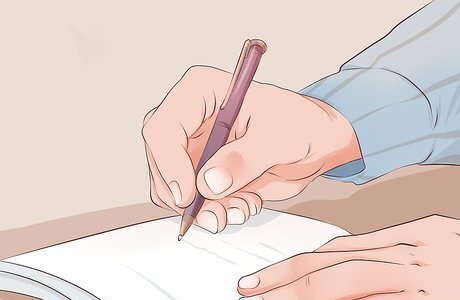
Give yourself goals. Motivational strategists believe that good habits can be established by dreaming big about the way you would like things to be, such as being a more affectionate parent. Then, give yourself micro quotas, such as “I am going to spend 20 minutes conversing directly with my children every day.” Always break down larger goals into smaller goals so they are more obtainable and give you the opportunity to celebrate your successes more often.

Don’t be afraid to talk to a professional. If you have no desire to show affection or feel affection but can’t express it, consider speaking to a counselor or therapist—either alone or with your partner. Relationships take work. Don’t associate couple’s counseling or seeking therapy on your own with weakness. If you love someone and want to make it work, then nothing should keep you from seeking help to make your relationship stronger.


















Comments
0 comment